Behringer BX1 – The Speculation is Over
The flagship DX synth has received the Behringer treatment

Ever since Behringer bought Tears For Fears’ old Yamaha DX1, anticipation of a Behringer recreation has been rife. Today at NAMM 2025, that speculation was ended. Introducing the Behringer BX1.
I guess good things come to those who wait. When Uli Behringer outbid me (and a bunch of others) on a bunch of old Tears For Fears gear, the rumour mill went into action immediately. Just before Christmas, Behringer released their LM Drum, another recreation of a TFF acquisition.
The Behringer BX1 Prototype
And now this morning at NAMM 2025, a Behringer BX1 appeared in the wild for the very first time! Very quickly, the original Yamaha DX1 was the flagship DX synth. Originating from the DX prototype, the CSDX, it emerged late in 1983, some months after the seismic launch of the DX7.
Sporting two DX7 sound engines but enhancing them with a Performance mode, polyphonic aftertouch, a fully-weighted wooden keybed, a hugely expanded user interface with detailed LEDs and a Brazilian Rosewood veneered cabinet, the DX1 was the Rolls Royce of digital synths.
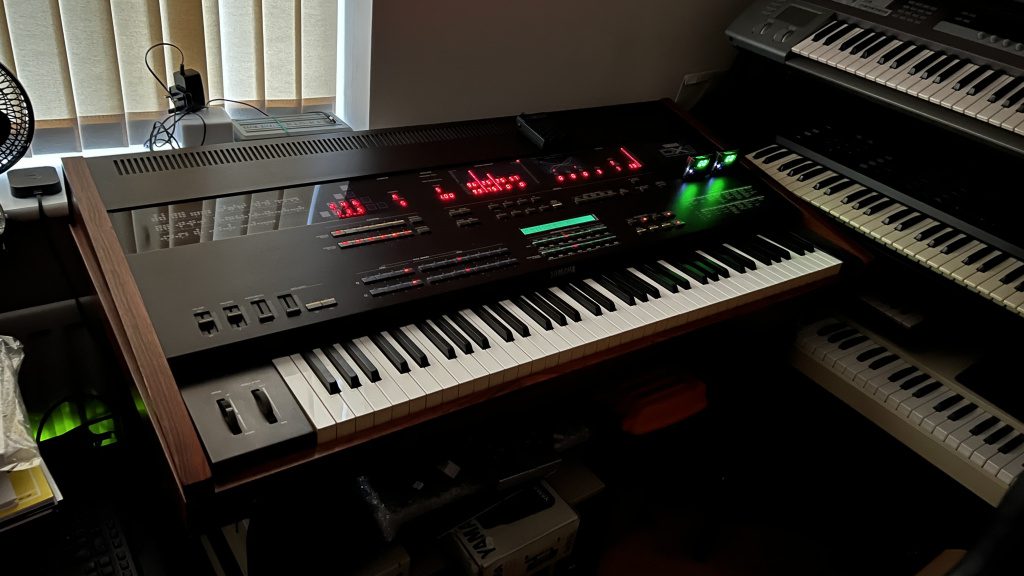
As the guardian of a Yamaha DX1, the Behringer BX1 is of great interest to me for many reasons. It shouldn’t be a difficult synth to replicate, but how have they gone about it? Well, we have guys on the ground (thanks Xavier!) who brought us the pictures you see here, so let’s take a look and try to figure out what we can see.
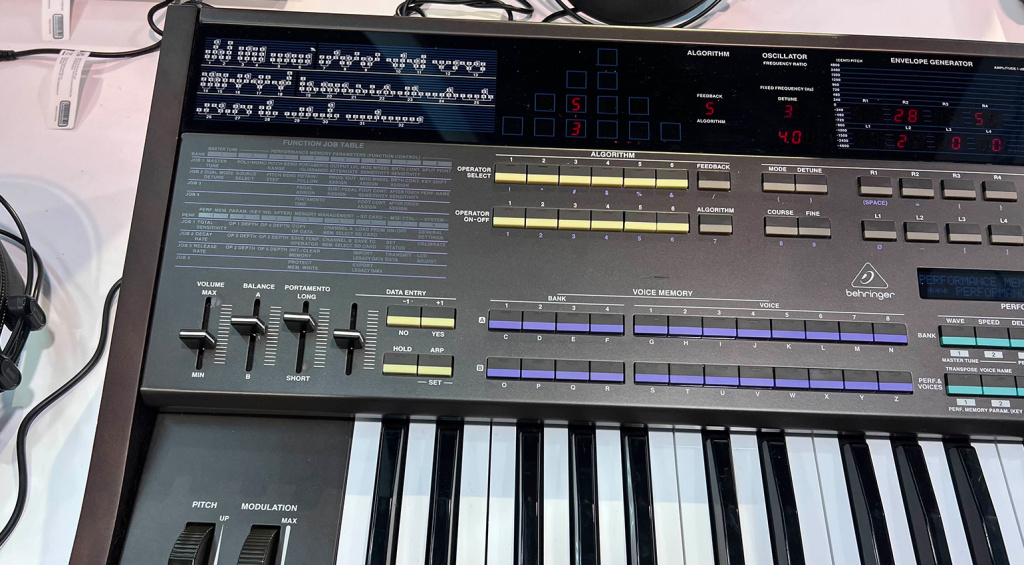
Let’s Take a Look
First up, it’s a 61-key affair, unlike the DX1’s 73. One would assume it’s the same keybed as the UB-Xa, giving us polyphonic aftertouch. This is essential to the DX1 experience, so this has to be the case. It also looks like they’ve emulated the user interface incredibly close to the original. From the buttons to the LED displays and the Job List, this looks incredibly close.
However, there are some differences, most notably the addition of an FX section, an analogue multi-mode filter that seems to be CS-80-inspired and an SD card slot in place of the twin memory cartridge slots on the DX1. We can also assume that it has the dual engines, giving us 32-note polyphony at a minimum because there’s an A/B slider, as well as the Dual, Single and Split selectors.
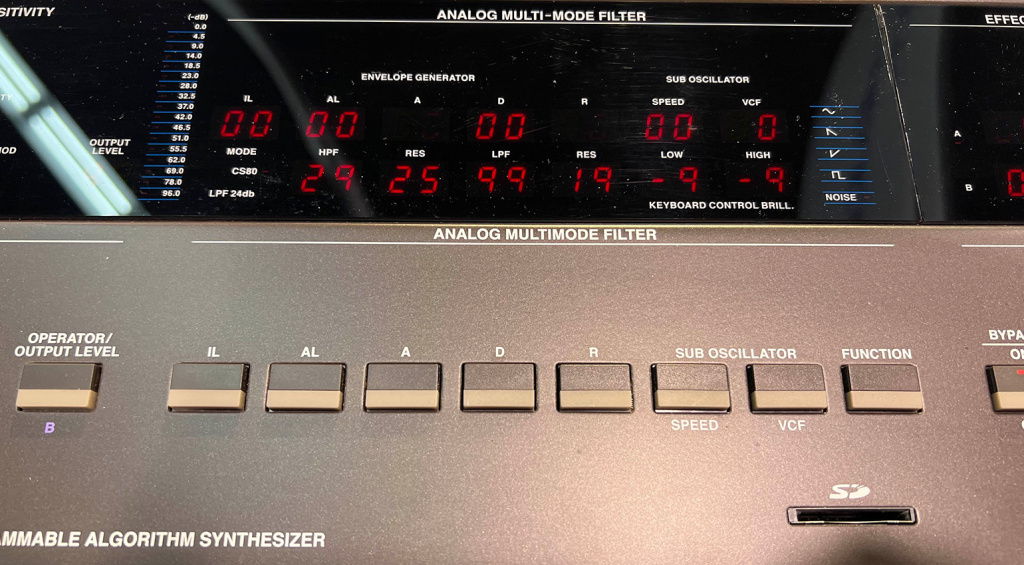
Connectivity
Around the back, the familiarity continues. There are balanced XLR and unbalanced quarter-inch jack A/B/P outputs. A and B were for each engine, and P was A and B combined. The DX1 was not stereo, so we assume this isn’t either. 4x foot pedal controller ports, a breath controller input and three MIDI ports continue the similarity, but there is the welcome addition of a USB port.
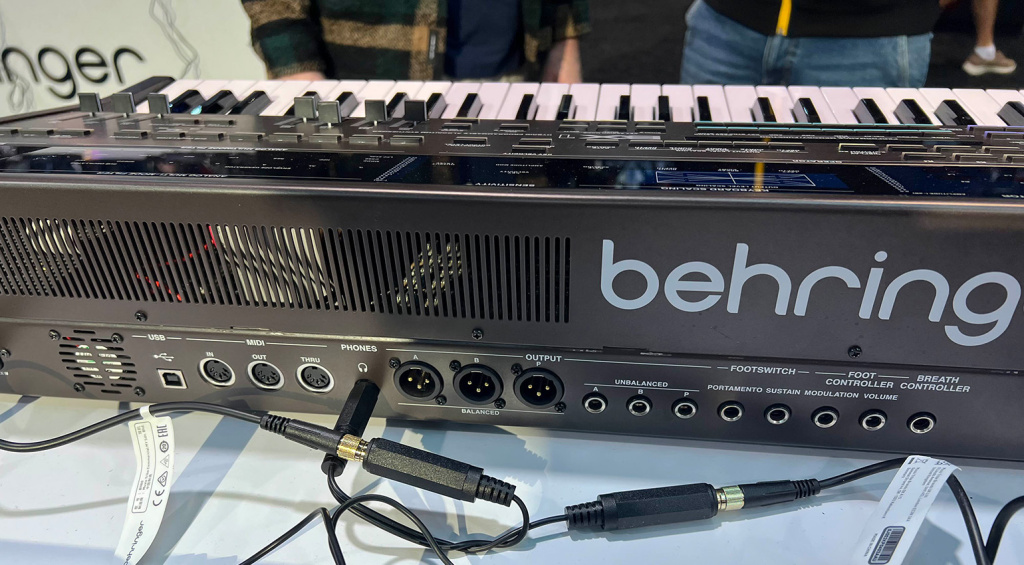
Another interesting addition is a DAC selection button. The DX1, surprisingly (and often incorrectly reported), used the same BA9221 12bit DACs as the DX7, companded to somewhere between 14 and 15bit. The reason the DX1 sounded cleaner was that Yamaha tested every BA9221 chip by hand, and the quietest ones were sent to the DX1 and DX5 production lines.
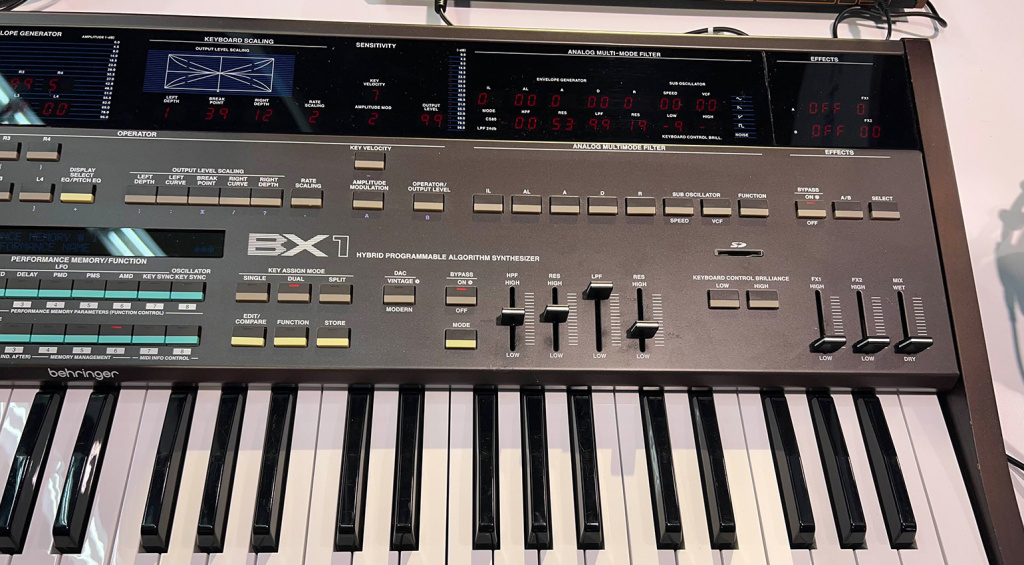
So it seems the Behringer BX1 gives you the option of a 12bit DAC and presumable a cleaner 16bit version as found on the Mk.II DX7’s. Of course, this is speculation on my part as we are yet to receive full specs from Behringer.
More Information
Price and availability are yet to be announced, as this is a prototype, but given Behringer’s penchant for showing new gear and then taking a few years to reach production, we might have to wait a while. While we do, as a DX1 owner, I’d like to take this opportunity to throw my hat in the ring for a beta-testing role!
Watch this space for more news as we get it! Be sure to follow Behringer’s social media channel as that is where they do most of the marketing.
- Behringer Website
- More from Behringer
- My DX1 Story
17 responses to “Behringer BX1 – The Speculation is Over”

 4,7 / 5,0 |
4,7 / 5,0 | 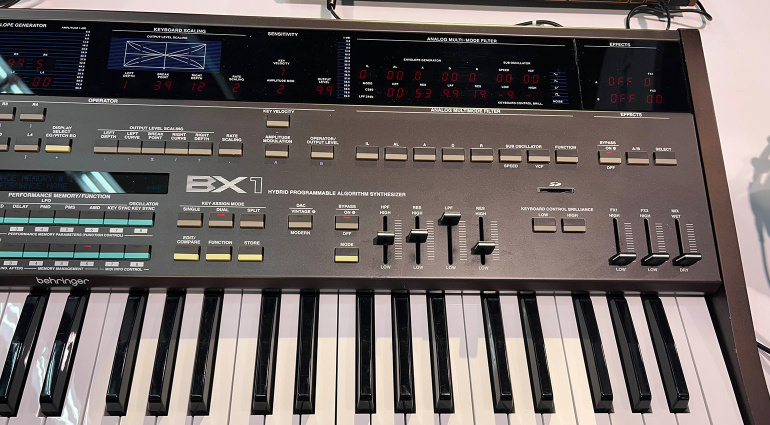
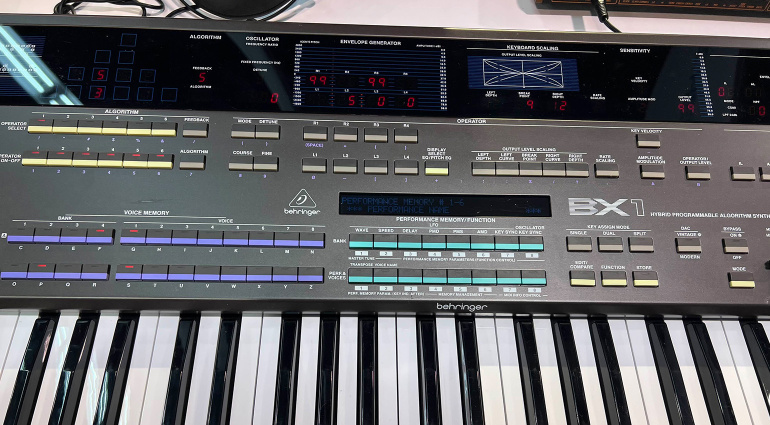
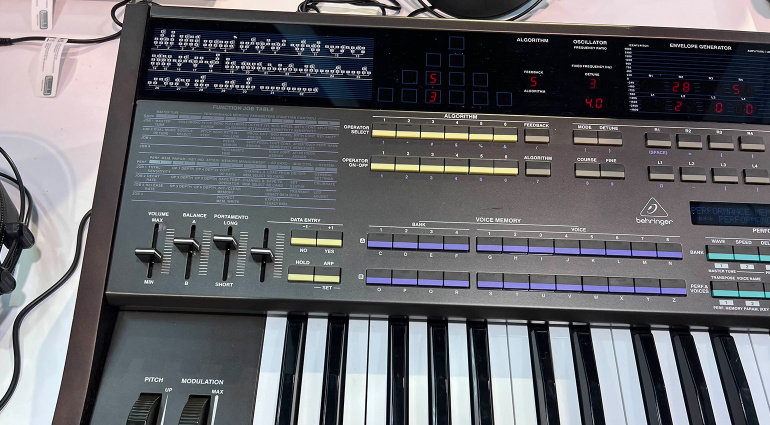
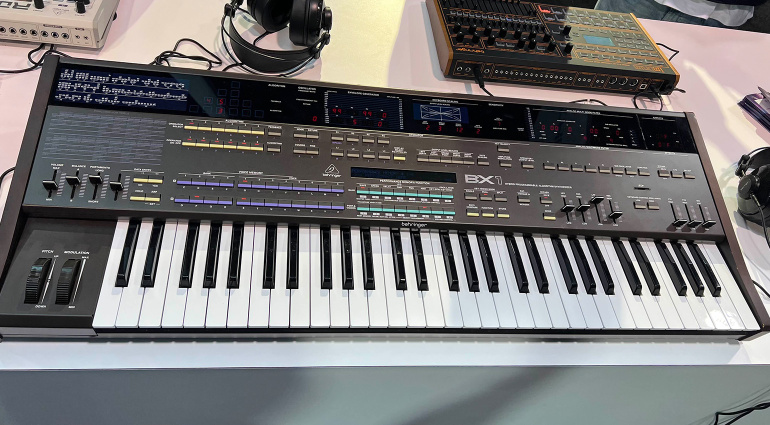
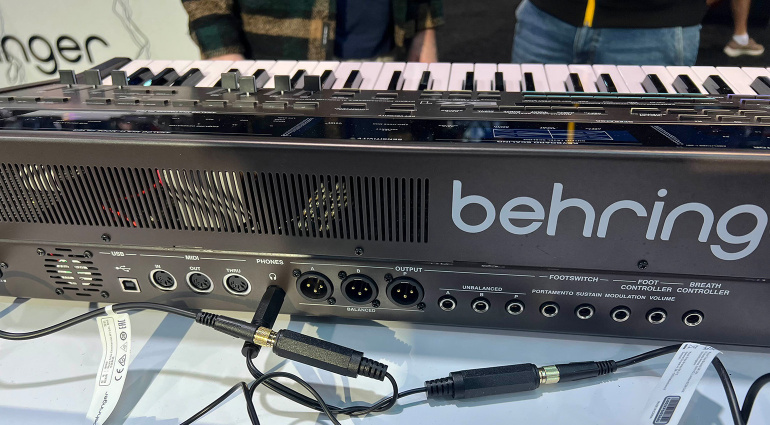
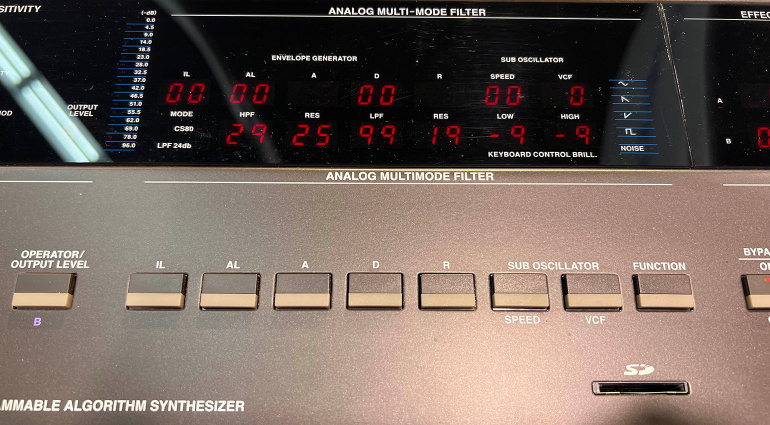






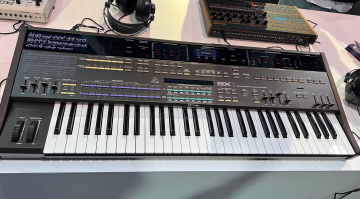


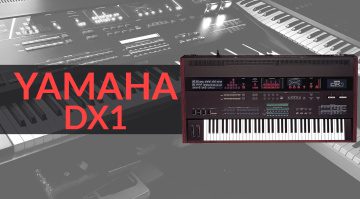
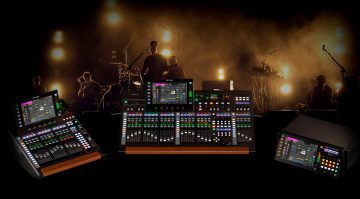
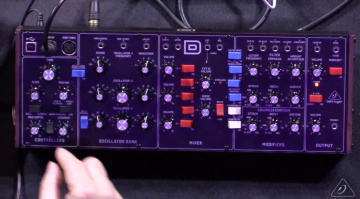
Amazing that there is a BREATH CONTROLLER input! Here’s hoping that Behringer will then also make some of those. Haven’t seen them on the market for ages. I’m always afraid of my BC-3 breaking.
check out TEControl, they have a BC3 signal compatible controller and modern alternatives.
I have a TEC Control 3. With all the Swam software. Just awesome!
That BREATH CONTROLLER input is a complete design failure. How are you supposed to play the keyboard while blowing in there? It’s almost impossible! Also, it didn’t seem to control anything when I tried.
LOL! 😉
Gorgeous! But meanwhile Plogue’s OPS7 double DX7 emulation VSTi is sooo good that besides the physical lust for this big toy, soudnwise, i am already in DX1 paradise.
As fantastic as OPS7 is, it doesn’t support DX1/5 Performance patches which is a real shame. It’s close, but no cigar 😉
https://www.difficultaudio.com/sounds
Yeah, I’m aware of those, as I supplied them with the original Performance data and then did A/B comparisons with my DX1 and DX5. However, and through no fault of the programmer, it’s not as convenient a process to use as dedicated Performance patches. But yes, it’s as close as we’ll get outside of the original synths themselves and, quite possibly, this new instrument 🙂
Thanks a lot for that clarification ! 😀
It would be awesome to see TX waves here, and microtunings from the DX7II. Hopefully a couple of easy things to add before they ship it!
I know NAMM is happening and all that, but Gearnews could have started the weekend early after this news. Or maybe you’re saving that for when the BS1r drops. What a time to be alive!
Haha! Indeed 😉 Thing is, Yamaha themselves should be doing a new FS1R. They’re already using its 8-Op engine in the Montage M and MODX+. All they’d need to do is re-add the extra unvoiced operators for the formant shaping, and they’d have an utterly unique FM synth. I still use my FS1R and nothing else comes close.
By TX, you mean TX81Z, with the additional waveforms? All the other TX units were sine wave only. It would be interesting to see if they could include such things as fractional scaling, microtunings and unison poly as seen on the Mk.II DX7’s but I’m guessing they probably won’t
Yep that’s what I meant. I’ve heard them called “TX waves” (in “The Sound Design Show” podcast episode 2, which is all about FM).
As a DX7II owner I don’t think I’d desperately miss microtunings, fractional scaling is nice for percussion patches.
It’s pretty impressive that Behringer added features to their new drum machine so quickly after the Roger Linn interview, so if you get to be a BX1 beta tester, maybe you can start dropping hints!
a little closer ^ ^
I have a DX5, TX7 and SY99….I’ll probably buy this one too.
You are currently viewing a placeholder content from Facebook. To access the actual content, click the button below. Please note that doing so will share data with third-party providers.
More InformationYou are currently viewing a placeholder content from Instagram. To access the actual content, click the button below. Please note that doing so will share data with third-party providers.
More InformationYou are currently viewing a placeholder content from X. To access the actual content, click the button below. Please note that doing so will share data with third-party providers.
More Information